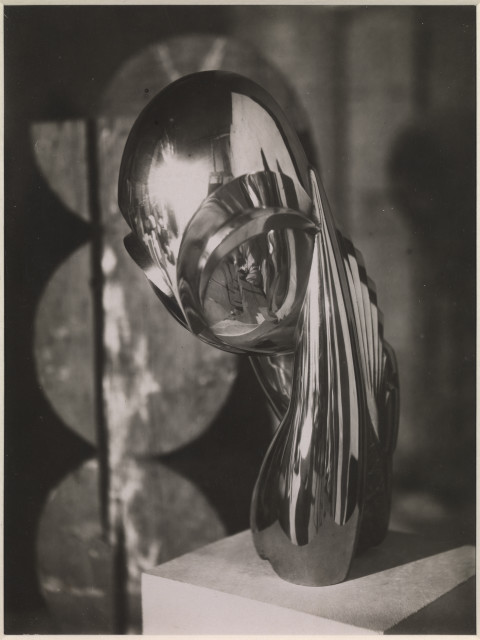BRANCUSI: The Eye behind the sculpture.
Grob Gallery is please to present an exhibition of BRÂNCUȘI. As an icon of the 20th century and as the hero of Modernism, we would love to invite you to view our 14 photographic works by Constantin Brâncuși & 3 works by his dear friend Florence Homolka.
Constantin Brancusi’s photographs give us the great sculptor’s eye—how he saw his sculpture and wanted his viewers to regard it in turn. Many of his photographs were taken in the studio, capturing the works as the light hit them there, the curve of a polished bronze splicing the hard edges of another in the background. These photographs are significant in part as a preservation project. Of his relatively small output of 215 known works, more than 40 from his early period have been lost or destroyed and are only known from the photographs. Brancusi must have suspected that this relatively new technology would remain as patina faded or marble cracked, driving his commitment to document all his works himself. But Brancusi was also someone who delighted in this medium, experimenting with exposures and carefully composing each print to take photographs that stand as works of art in their own right.
Brancusi began photographing his work as early as 1900 to secure funds to cast it in bronze. He sent photographs of clay works as postcards to friends in Romania to convince them to purchase the sculptures and commission the casting.
Brancusi began to take photography more seriously after Edward Steichen and Alfred Stieglitz photographed his work when the pair exhibited his sculptures at their Photo-Secession Gallery in New York in 1914. Brancusi had met Steichen at Auguste Rodin’s studio and they became lifelong friends, but while the artist was pleased to exhibit in New York for the first time and admired Steichen and Stieglitz’s photographs, he felt that neither managed to “show the soul of my work.” In 1921 Brancusi met Man Ray, who had just arrived in Paris from New York, and enlisted his help to purchase darkroom equipment and learn how to use it. In his autobiography Self-Portrait, Man Ray recalls receiving an envelope shortly afterwards of Brancusi’s first prints: blurred, out of focus, covered in lines.
But Brancusi quickly mastered the medium, publishing 24 extraordinary images just a few months later in the modernist arts journal, The Little Review, which published their “Brancusi Number” in Autumn 1921. From this point forward until his death in 1957, all images of his work across exhibition catalogues, magazines and his monograph would be taken by the artist. The significance of this fact cannot be overstated. Marcel Duchamp recognized the import of Brancusi’s photographs right away, including a selection in a catalogue he designed for Brancusi’s 1926 exhibition at the Brummer Gallery in New York. In a glowing review of the exhibition, critic Henry McBride paid special attention to the photographs, comparing them to Man Ray’s. Brancusi first exhibited his photographs a year prior in Romania. In addition to photographing his studio and sculpture, Brancusi took numerous self-portraits and often photographed friends and still lifes of bouquets of flowers.
Comparable to van Gogh’s letters and Delacroix’s journals, Brancusi’s photographs are an incomparable index of the artist’s output and intention. Like the painters’ writing, the photographs can be used to identify fakes or evoke the quality of their surfaces as they conceived them. Brancusi always photographed his works in direct sunlight to accentuate the bronze’s glinting polish. But also like the painters’ words, Brancusi’s photographs convey relationships between his works, draw out their most salient aspects and contextualize their forms within his carefully choreographed studio at the Impasse Ronsin in Paris. Brancusi would bequeath roughly 700 negatives and just over 1600 prints to France, along with all the contents of his studio, when he died at the age of 81. Now, over 60 years later, these works continue to offer an invaluable glimpse into the way this pioneer of modernism saw his work and how it fit into the world around him.
